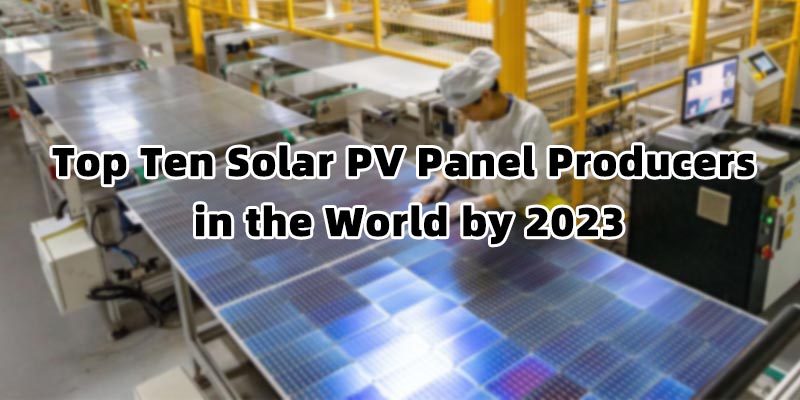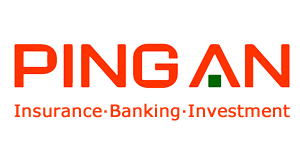
Photovoltaic (PV) cells, also known as solar cells, have become an increasingly popular and practical solution for generating clean and renewable energy. As the demand for renewable energy sources continues to grow, the global PV cell market has been rapidly expanding in recent years. In 2022, the world’s top 10 photovoltaic cell manufacturers include companies from China, Europe, and the United States, with an estimated market share of over 70%.
Throughout 2020, a variety of domestic and international policies were implemented aimed at reaching carbon peaking and carbon neutrality, driving the expansion of installed capacity and promoting the industry’s forward growth. This would lead to a certain level of certainty and development. Projections suggest that the global power generation growth rate will be 2.5% from 2020 to 2030 and 2.0% from 2030 to 2060. As part of this trend, coal and thermal power will gradually phase out, while hydropower, nuclear power, and biomass will be developed on a smaller scale. Wind and light will be the primary energy systems developed. By adhering to the current planning goals of various countries, it is expected that the global new installed capacity for conservative photovoltaic energy will exceed 1000 GW by 2030 and 2400 GW by 2060.

| Headquarters | Xi’an, China |
| Establishment | 2000 |
LONGi Green Energy: LONGi has established R&D centers that specialize in the development of silicon wafers, cells, modules, and solutions. By leveraging these resources, LONGi is dedicated to creating a more sustainable and habitable environment for people around the world, with customer value at the forefront of its mission. This unwavering commitment to research and development has enabled LONGi to become a leading player in the photovoltaic industry.

| Headquarters | Shanghai, China |
| Establishment | 2006 |
JinkoSolar: JinkoSolar, boasts a team of exceptional executives and visionary leaders who have fostered a strong corporate culture. Their technological breakthroughs have been nothing short of revolutionary, placing them at the forefront of the industry in terms of technological development, product design, manufacturing capabilities, and global expansion. Today, JinkoSolar stands head and shoulders above its rivals, reflecting its relentless pursuit of excellence and innovation.

| Headquarters | Changzhou, China |
| Establishment | 1997 |
Trina Solar: Trina Solar is credited with introducing the Energy Internet of Things (IoT) concept, which combines smart applications to achieve full independent research and development. Through strategic transformation in 2017, the company is dedicated to becoming a global leader in the Energy IoT field.

| Headquarters | Shanghai, China |
| Establishment | 2005 |
JA Solar: As per both third-party statistics and news reports, JA Technology holds the fourth rank worldwide in terms of shipments. According to the China Photovoltaic Industry Association, JAITECH’s shipments account for approximately 13.77% of China’s PV module production, which is estimated to be 288.7GW in 2022.

| Headquarters | Shanghai, China |
| Establishment | 2003 |
CSISolar: CSISolar has made widespread progress as a provider of energy solutions across 20 countries and territories on 6 continents. Meanwhile, CSISolar,boasting a workforce of over 14,000 people, has established itself as a prominent manufacturer of solar photovoltaic modules as well as a supplier of solar energy solutions.

| Headquarters | Ningbo, China |
| Establishment | 2002 |
Risen Energy: Risen Energy’s continuous research and development of HJT cells and modules has resulted in an integrated HJT research system and the accumulation of unique and independent research results.

| Headquarters | Changzhou, China |
| Establishment | 2006 |
Astronergy: Astronergy is one of the select few in the industry that provides full product offerings and has the advantage of both system and technology integration. By providing customers with a one-stop-shop, complete with quality assurance, they offer a distinct advantage. Furthermore, this company has been a pioneer in the photovoltaic market, setting itself apart from its competitors.

| Headquarters | Tempe, Arizona |
| Establishment | 1999 |
First Solar: First Solar has distinguished itself from other solar companies by adopting a unique approach to photovoltaic materials, which it has steadfastly maintained for more than two decades. This technological minority has enabled First Solar to become a prominent player in the global photovoltaic industry, setting it apart from its competitors.

| Headquarters | Seoul, South Korea |
| Establishment | 1999 |
Q CELLS: Q CELLS stands out as the sole core photovoltaic company that has secured the backing of the Global 500. Additionally, as the world’s biggest solar cell manufacturer, Q CELLS has six R&D and production facilities located across China, Korea, Germany, the USA, Malaysia, and Turkey. This expansive global presence positions Q CELLS as a major player in the photovoltaic industry.

| Headquarters | Huzhou, China |
| Establishment | 2009 |
DMEGC Solar: It is worth highlighting that DMEGC has a robust BIPV layout and maintains close relationships with both upstream and downstream companies in the industry. To further expand its reach, DMEGC has established a dedicated PV system investment and development department, which specializes in participating in the development and construction of rooftop distributed PV power plants and ground-mounted power plants. This commitment to innovation and partnership underscores the company’s position as a leader in the photovoltaic industry.
In conclusion, these top 10 solar PV panel manufacturers in the world in 2022 have made significant contributions to the growth of the solar industry. Their products are known for their high efficiency, reliability, and competitive.
As can be seen, most of the top ten global players in the PV industry are from China, which proves that China’s PV industry has made a very high contribution to the global energy transition, while China’s PV exports have also become a strong support to stabilise the growth of the country’s economy.
The issue of China’s PV exports is a big one, but the deconstruction has to be nuanced.
There are many factors that determine the marketability of PV exports, including whether the European market can stop falling and remain resilient enough, whether the Asian market can sustain large-scale acquisitions, and whether the American market can be successfully opened up.
There are also many factors that affect PV exports at a deeper level, including climate change and the global energy transition, the EU’s countermeasures against Chinese PV products, the US-China trade war, the Russia-Ukraine conflict, and so on.
When so many variables come together and interact with each other, forecasting becomes very difficult. In our view, to distinguish between major and minor contradictions and to return to the fundamentals of things is at least an objective and prudent way of thinking and analysing issues.
New energy and the energy transition have become a hot topic around the world. Governments are beginning to focus on renewable energy and the energy transition, introducing a range of policies and measures to support their development. In China, the government has set a target for the share of renewable energy in energy consumption and has offered a range of subsidies and incentives to attract more investment. In Europe, some countries have developed specific regulatory frameworks that call for a gradual transition to zero carbon emissions over the next few decades. In the US, some state governments have begun to implement similar policies to promote new energy sources.
There are some differences and similarities between national policies and measures. In terms of policy objectives, there are relatively large differences between countries. For example, some countries’ policy objectives are primarily aimed at reducing carbon emissions, while others are more focused on energy security and economic development. In terms of policy instruments, there is also some variation between countries. For example, some countries use economic instruments such as tax incentives to encourage new energy development, while others focus more on technology research and development and industrial support.
In any case, the importance of new energy sources and the energy transition cannot be overstated. Issues such as global climate change and energy security have become common global challenges, and new energy sources and energy transition are seen as one of the key ways to address these challenges. By developing new energy sources and promoting energy transition, we can reduce our dependence on traditional fossil energy sources, reduce carbon emissions, improve energy security and environmental protection, and promote sustainable economic development.
Looking ahead, new energy sources and energy transformation will continue to develop. Although they face a number of challenges and difficulties, such as immature technology, insufficient investment and an inadequate policy system, new energy sources and energy transition will gradually become an important part of the global energy mix as technology develops and policies continue to improve.














